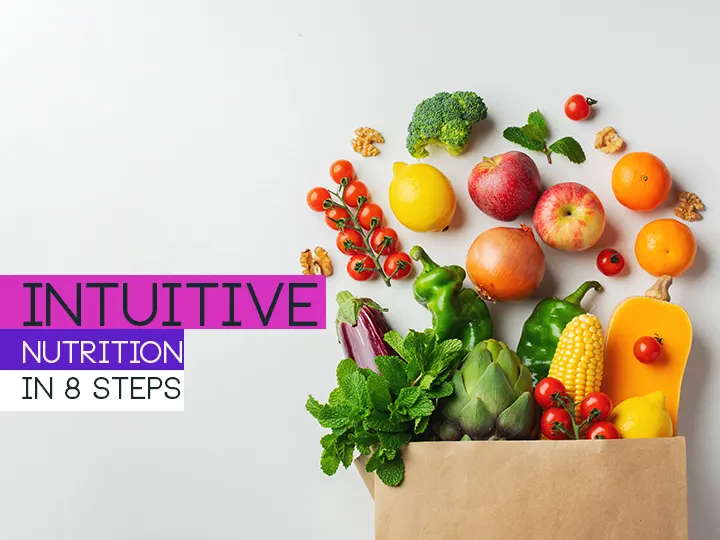
Intuitive Nutrition in 8 Steps
Diets that most people try to fit into a certain pattern or to follow because they believe they are healthier are now history, and the diet that focuses on the body's wishes and needs comes to the fore.
Most people spend two and a half hours a day eating, but that time is not just about eating. What you eat while reading, watching or traveling may not be sufficiently taken into account by your memory.
What is intuitive eating?
Intuitive eating is largely geared towards restoring this state of awareness. Mindfulness means focusing on the present moment while calmly acknowledging and accepting your emotions, thoughts, and bodily sensations.
While the ideal intuitive food choices are similar to the Mediterranean diet, centered on fruit, vegetables, whole grains, seeds, nuts, and vegetable oils, the technique can also be applied to a cheeseburger and fries. At its core, intuitive means being fully aware of your food as you buy, prepare, serve and consume. However, adopting this practice may require more than a few changes in your approach to meals and snacks.
Steps you can take to eat intuitively
1- Start with your shopping list. Consider the health value of each item you add to your list and stick to it to avoid instant purchases while shopping. Fill most of your basket with healthy foods and try to avoid processed, ready-to-eat food aisles.
2- Come to the table with an appetite but not hungry. If you skip meals and starve yourself, you will only focus on filling your stomach and fail to notice what you are eating.
3- Start with a small portion. Using a smaller plate ensures that you don't have to finish the plate when you're hungry.
4- Know the value of your food. Pause for a minute or two before you start eating to think of everyone who has worked hard to bring what you're eating to your table. Silently express your gratitude for the opportunity to enjoy the delicious meals and the friends you share them with.
5- Bring all your senses to food. As you cook, serve and eat your food, pay attention to the color, texture, flavor, and even the sounds different foods make when preparing them. As you chew your food, try to identify all the ingredients, especially the spices.
6- Take small bites. It's easier to taste food when your mouth isn't full.
7- Chew well. Chew the food thoroughly until you taste the essence. Depending on the food, you may need to chew each bite 20 to 40 times. You might be surprised at all the flavors that come out.
8- Eat slowly. By chewing and savoring a lot, try to be just conscious of your food for five minutes without focusing on a conversation.